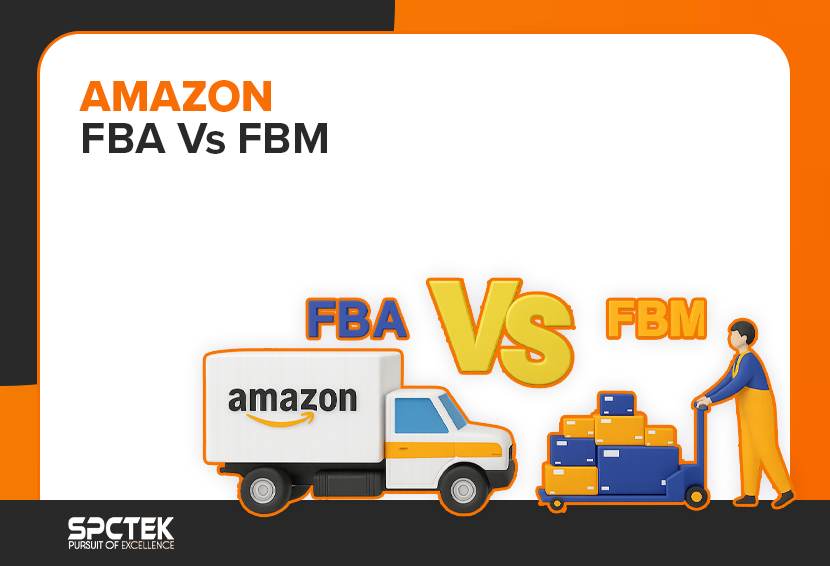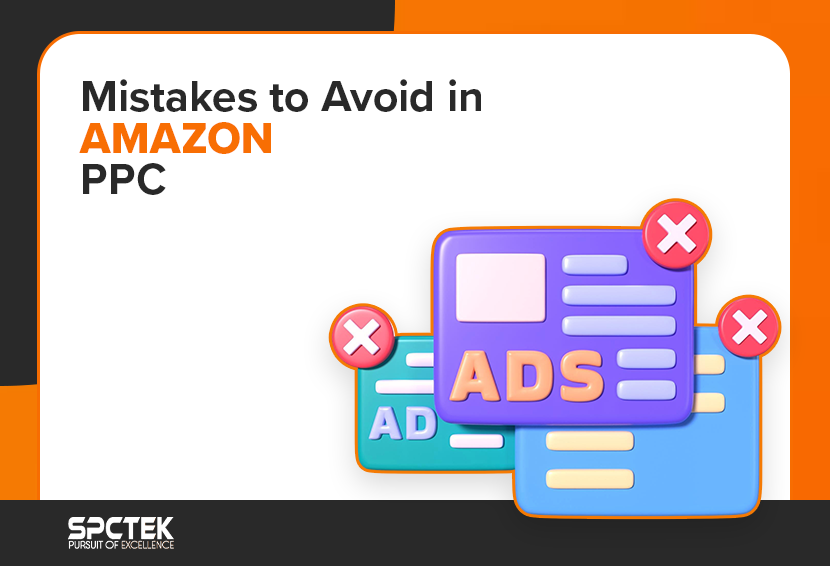When it comes to selling your products on Amazon, you have two fulfillment options: Amazon FBM (Fulfilled by Merchant), which involves shipping directly to customers using a shipping service, or utilizing Amazon’s FBA (Fulfilled by Amazon) program. Which one is better? This question is common among Amazon sellers. Both programs have pros and cons, so you’ll need to think about your specific business needs and choose the best option based on those criteria. This article will compare Amazon FBA vs. FBM in detail to help you make a smart choice.
What is FBA?
FBA is an acronym for “Fulfillment by Amazon.” It’s a business model in which a business sells products on Amazon, and Amazon then takes care of all the logistics, including picking, packing, and shipping the products to customers. FBA is one of the most popular ways businesses sell their products.

With so many advantages to selling through Amazon FBA, which we will discuss later in this article, it’s no wonder that several businesses are looking into FBA as their fulfillment option.
What is FBM?

Amazon FBM, which stands for “Fulfillment by Merchant,” is the fulfillment option in which the seller stores, packs, and ships the items to customers. In Amazon FBM, the seller ships the products directly to the customer and is in charge of the entire fulfillment process. This option offers greater control and flexibility over the fulfillment process, but also comes with the added responsibility of handling the shipping and storage of the products.
Amazon FBA and FBM: What’s the Difference

Things to Consider Before Choosing Amazon FBA and FBM
Picking the right fulfillment method depends on your needs and preferences. Here, we’ll go through the most important factors to consider when choosing between Amazon FBA and FBM.
1. Logistics
FBA simplifies your logistics so you can focus elsewhere. It is ideal for new sellers or those without established shipping processes. However, established businesses with fulfillment capabilities can also benefit from FBA by comparing costs to see if FBA offers savings for high-turnover products.
2. Control over Customer Experience
FBM sellers manage storage, shipping, and customer service themselves, which gives them more control over the customer experience. FBA, on the other hand, offers less control as Amazon handles these tasks, making it ideal for sellers who prefer less involvement in customer interactions.
3. Item Size and Weight
FBA is ideal for small, lightweight items that have high turnover rates. Larger, heavy products, like refrigerators, can incur high FBA fees and storage fees. Use Amazon’s FBA revenue calculator to compare costs and decide which method suits your product best. Also, products with a low turnover rate might incur late storage fees as an additional cost.
4. Seller Feedback Management
FBA sellers face fewer risks with negative feedback since Amazon manages most steps of the process and can remove certain negative reviews. FBM sellers must ensure fast shipping, good product condition, and excellent communication to avoid poor feedback.
5. Operational Cost
FBA fees cover picking, packing, shipping, and handling, while FBM sellers bear storage, labor, and shipping costs. Choose the method that minimizes overall expenses for your business.
6. Prime Badge
FBA products automatically qualify for Prime shipping, giving access to over 200 million Prime members. FBM sellers can offer Prime shipping only by meeting strict Seller-Fulfilled Prime criteria.
Amazon FBA vs FBM Pros and Cons
Both Amazon FBA and FBM have their advantages and disadvantages. Below are some of the key pros and cons of both fulfillment methods:
1. Amazon FBA Pros and Cons
Pros of FBA
1. Prime Eligibility
Customers with Amazon Prime prefer products that are fulfilled by Amazon, which gives FBA sellers an edge over FBM sellers.
It increases FBA sellers’ exposure and can lead to more customers visiting their Amazon stores.
2. Order Fulfillment
Like most small business owners, you’re constantly juggling a dizzying array of tasks, from marketing to inventory to customer service.
But one challenge you will face is fulfilling orders. That’s where FBA comes in – handling the order fulfillment, so you can take some of the pressure off yourself.
3. Return and Customer Services
Amazon FBA (Fulfillment by Amazon) also takes care of returns and customer service for the seller, making the process easy and quick for the customer. This can greatly improve the customer experience and enhance the seller’s reputation. With Amazon’s well-established customer service system, customers can quickly initiate returns or resolve any issues with their purchases, which can reduce the seller’s workload and minimize the risk of negative feedback.
This can make customers happier and more loyal in the long run, which can help the seller’s business grow over time.
4. Warehousing and Handling Hassel
FBA is hassle-free for inventory management because Amazon handles your warehousing, logistics, and fulfillment. It means you don’t have to worry about inventory management or managing stock, which can save you time and money in the long run.
Also Read: 10 Strategies for Amazon Inventory Management: Updated Guide
5. Multi-channel fulfillment
Multi-channel fulfillment is another key benefit of Amazon FBA (Fulfillment by Amazon). With this feature, sellers can fulfill orders from multiple sales channels, such as their own website, through a single fulfillment solution, streamlining their operations and saving time and resources. This allows sellers to reach customers through multiple channels and increase their sales potential.
6. Global Reach
Another benefit of Amazon FBA (Fulfillment by Amazon) is its ability to help sellers reach customers globally. With Amazon’s huge network of warehouses and distribution centers all over the world, sellers can reach more customers and enter new markets, and customers can get their orders quickly and reliably, no matter where they live.
This global reach opens up new opportunities for sellers and can lead to increased sales and growth.
Also Read: 10 Strategies for Long-Term Amazon FBA Success
Cons of FBA
1. More Returns
Amazon’s open return policy can cause some sellers to get more returns or get returns more often than they used to. Even though the open return policy may be good for customers, it can also be hard on sellers, who may have to pay for products that are returned. This can impact their profitability and make it more difficult to manage their business effectively.
Therefore, it’s important for sellers to consider the potential impact of Amazon’s open return policy on their business and plan accordingly. This may include implementing strategies to reduce the number of returns, such as providing clear product descriptions and offering high-quality products.
2. Lead Time
It can take several days for products to reach Amazon’s fulfillment centers, adding lead time to the fulfillment process. This can impact delivery times and customer satisfaction, especially for customers who expect fast shipping.
In order to maintain customer satisfaction and ensure timely delivery, sellers should continuously monitor their FBA stock levels and proactively send in more inventory before it runs low. This attention to detail and proactive approach can ensure a smooth and efficient fulfillment process.
Now that we have understood what Fulfillment by Amazon (FBA) is and its pros and cons, let’s discuss Fulfillment by Merchant (FBM).
2. Amazon FBM Pros and Cons

Pros of FBM
1. More Control Over Inventory
FBM gives sellers full control over all parts of the fulfillment process, such as managing inventory, shipping, and customer service. This allows sellers to personalize their operations and tailor them to the unique needs of their business.
2. Cost Saving
The FBM model has lower fees compared to Amazon’s FBA. You don’t have to pay for storing products in Amazon’s warehouses, and there are reduced fees in other areas. This leads to higher profit margins for your products, especially if they have small margins to begin with. However, it’s important to note that you still have to pay Amazon a fee for each sale (the Amazon Referral Fee) and cover the shipping expenses yourself.
3. Flexibility
FBM offers sellers greater flexibility regarding shipping options, packaging materials, and handling returns. This allows sellers to customize their operations to meet the specific needs of their customers, including faster shipping times, special packaging requests, and streamlined return processes.
4. Data Access
By handling fulfillment in-house, sellers using FBM have direct access to valuable customer information and order data. This allows them to gain insights into customer behavior and preferences and make informed business decisions that can help improve customer satisfaction and increase sales.
Also Read: How to Reduce Amazon ODR: Effective Strategies for Sellers
Cons of FBM
1. Return and Customer Services
As an FBM seller on Amazon, you are responsible for handling all customer service inquiries, including returns, product inquiries, shipping issues, and any other customer concerns. This requires a system for timely response, resolution of issues, and management of returns.
While good customer service can increase customer satisfaction and drive sales, it can also be time-consuming and resource-intensive, especially for small businesses.
2. Buy Box
To secure the Buy Box, FBM (Fulfilled by Merchant) sellers face a greater challenge than FBA (Fulfilled by Amazon) sellers. The fulfillment method plays a critical role in deciding who wins the Buy Box. To increase their chances, FBM sellers may need to adjust their pricing strategy, potentially lowering their prices to make themselves more competitive.
Wrapping Up!
Amazon FBA vs. FBM, which is best for your business? There are a lot of comparisons to be made between the two business models, and it can be a tough decision.
FBA is better for high-volume, higher margin products where sellers don’t want to handle storing and shipping. FBM is better for small-scale, low-margin, or one-off products where the seller is okay with storing and shipping products. If you like having more control over your inventory, then FBM is for you. However, if you like the idea of Amazon storing and dealing with returns, FBA is the way to go.
Got More Questions?
Yes, sellers can switch between FBA and FBM based on their business needs, product demand, and cost considerations. Amazon provides tools and resources to help sellers manage inventory and fulfill orders efficiently.
Amazon imposes restrictions on certain products for both FBA and FBM sellers, such as hazardous materials, restricted categories, and compliance with Amazon’s policies and guidelines. Sellers should review Amazon’s policies before listing products for sale.
Amazon FBA typically offers faster shipping and delivery times, especially for Prime-eligible products, as orders are fulfilled from Amazon’s network of fulfillment centers. FBM shipping times may vary depending on the seller’s location, shipping methods, and carrier services used.







